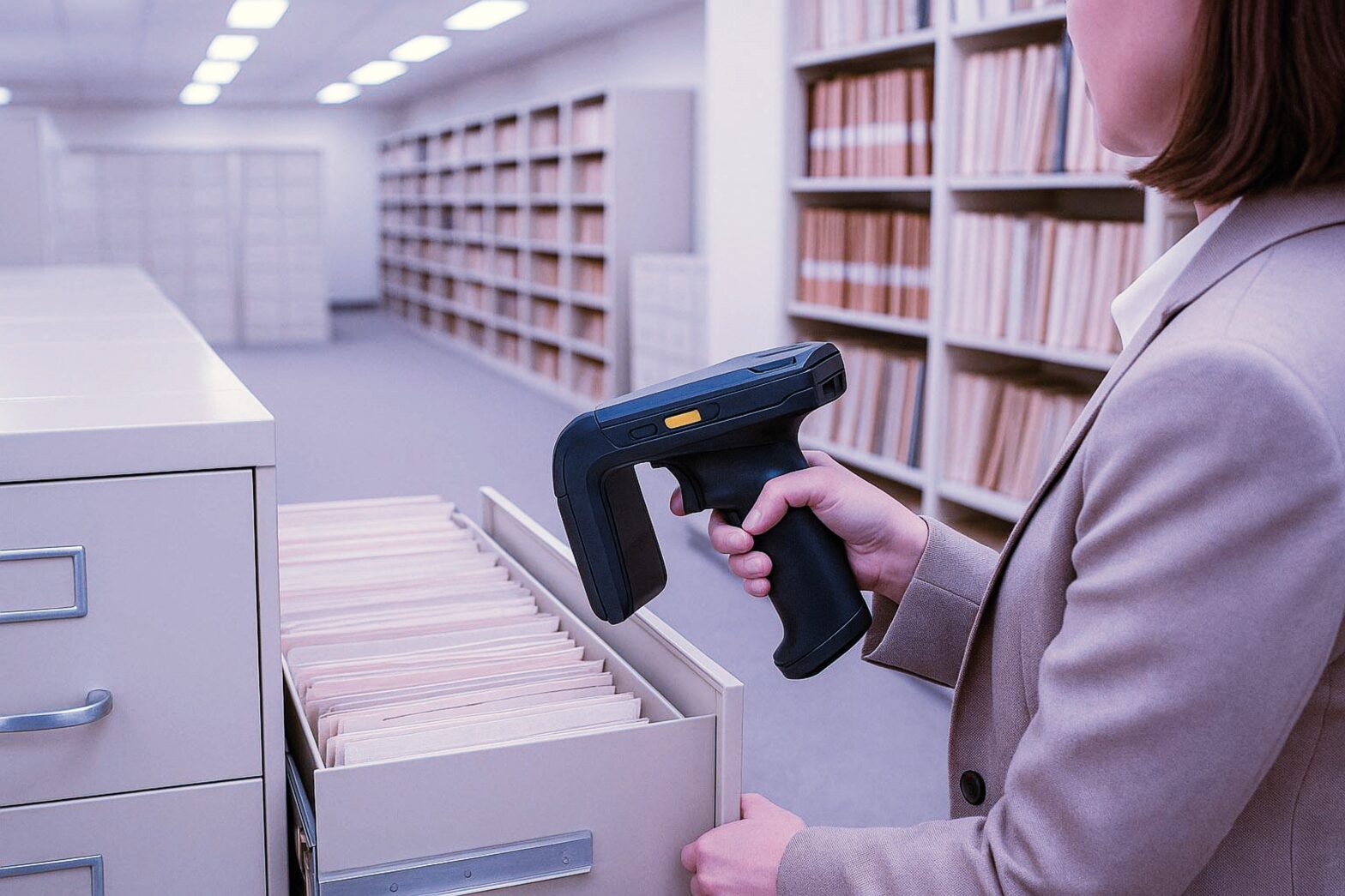
RFID document search system
The system for locating and searching court records, land and mortgage registers and other documents is an RFID solution that improves document management in archives, courts and administrative institutions. Its main purpose is to quickly search for files in archives, keep records and track the movement of documents. All documents and file folders are marked with RFID tags, which have a unique number encoded with them. Searching for court records, land and mortgage registers, other documentation is carried out using a handheld RFID terminal. After entering the file number into the RFID terminal, the racks and cabinets in a given room are scanned. With the use of radio waves, the reader locates the searched document with an RFID tag in the space between the shelves with an accuracy of several centimeters and signals its presence. An RFID system can also have a document control function to track the movement of documents between departments or courts. RFID readers and RFID antennas installed in the archives record the removal/return of an RFID-tagged document. The system increases security by restricting access to only authorized persons and recording any document movements. It is a solution that complies with archival regulations and perfectly supports the digitization of public institutions.
- Quickly search for documents.
- The exact location of each folder.
- History of the movement of files.
- Enhanced security and access control.
- Automatic inventory of files in the archive.
- Reduce human error.
Application
